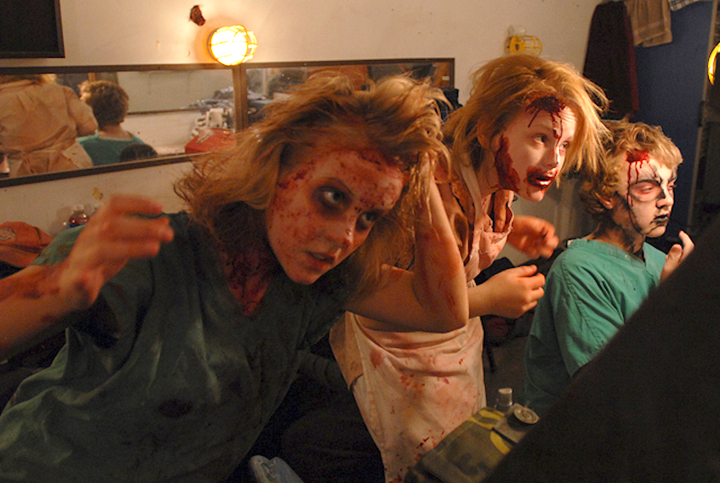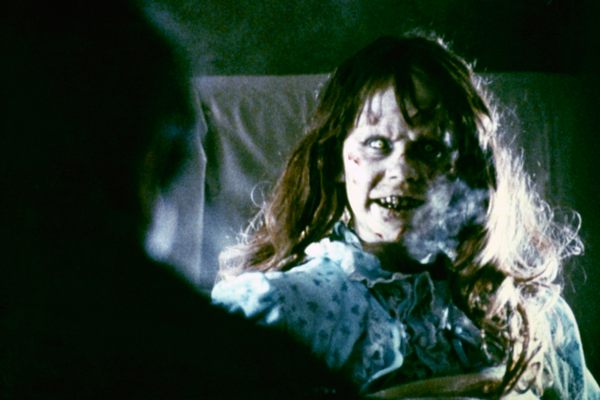
2022 Was Another Scary Year, and We Have the Spooky Stories to Prove It
From oomancy to human hematophagy, we got weird, wondrous, and wicked this year.
We at Atlas Obscura start planning for Halloween early. It’s not that we’re making costumes or prepping for parties (though some of us are), it’s that we and our network of freelance writers around the world are hunting for stories. We lean hard into October. In fact, this year, we called the whole month AO Loves Halloween. But it’s never quite enough for us. We’re looking for stories like these—weird, wondrous, wicked—all year long.
Here are some of our favorite spooky stories of the year that dig into the history, science, and culture of things that send a shiver up your spine.
The Spooky Science of Why Mirrors Can Freak Us Out So Much
by Kate Golembiewski
Legends about the powers of mirrors go way back, from the ancient Greek myth of Narcissus to the “love magic” of medieval times. Kate Golembiewski gazes upon the history and science of mirrored surfaces to see how these legends have changed over time, and what they have to say about psychology and how our brains process visual information.
The Strange Endurance of Consuming Human Blood for Our Health
by Mark Hay
Across the globe and over the centuries, people have turned to the consumption of human blood, not out of some vampire fetish, but to survive desperately lean times and harness the vital medicinal power they believed it carries. Mark Hay goes deep into this history, from a king and a pope drinking the blood of young boys for vitality in the 15th century to modern sanguinarians.

Why Horror Is So Damned Fun
by Samir S. Patel, Editor in Chief
Over the years science has illuminated a great deal about the biological side of fear, how our bodies prep us to run or throw a punch when there’s an immediate threat. But why we actively seek out frightening experiences as entertainment, how we react to them, and the impact they have on us, that’s a much darker forest. Editor in Chief Samir S. Patel visited the Recreational Fear Lab in Aarhus, Denmark, the only laboratory in the world dedicated specifically to understanding the fun, possibly beneficial, side of fright.
The Long, Extremely Witchy History of Telling the Future With Eggs
by Diana Hubbell, Associate Editor, Places
Cultures around the world, from Southeast Asia to Latin America, have relied on eggs to unscramble the mysteries of the future, a practice known as oomancy. It was part of the celebrations surrounding Samhain, the pagan holiday from which most Halloween traditions originate, and later played a role in witch trials in Salem and beyond, Diana Hubbell reports.
Getting to Know Edward Gorey
by Paula Span
In 1991, veteran reporter Paula Span went to Yarmouth Port, Massachusetts, to interview famed oddball artist Edward Gorey for the Washington Post. Thirty years later, Span returned with her family to the same house, now a museum dedicated to his life and work. Join her as she examines his legacy—and helps her granddaughter uncover the fates of all 26 Gashlycrumb Tinies.

Real Zombies and Body Snatchers Live Among Us
by Gemma Tarlach, Senior Editor/Writer
Parasitism is rampant in the natural world—nearly half of all animal species are parasites, for example. And a large number of these uninvited plus-ones manipulate their host’s behavior in some way to produce an advantage for themselves, occasionally taking complete control of the organism they have invaded. Gemma Tarlach introduces you to nature’s body snatchers, from cockroach-riding wasps to suicidal ants to spore-bomb spiders. And yes, humans are at risk from a few of them.
How Sexism Haunts the Haunted House Industry
by Kate Golembiewski
It’s not uncommon in a modern haunted house to see a woman trapped in a cage. “Is that a role that you ever see men in?” says sociologist Abberley Sorg. “And if not, why?” Kate Golembiewski reports on the work of Sorg and others to understand the gender dynamics at work in haunted attractions.
The Psychology Behind Why Identical Twins Inspire Fascination—and Fear
by Sarah Durn, Associate Editor
Between nine and 12 of every 1,000 deliveries produces twins, and around four of those are identical, or monozygotic, twins. There are a lot of factors that make us who we are, but identical twins share the same raw material. Why, however, many people find them interesting, unnerving, even scary, says more about general human psychology than it does twins themselves, reports Sarah Durn.











Follow us on Twitter to get the latest on the world's hidden wonders.
Like us on Facebook to get the latest on the world's hidden wonders.
Follow us on Twitter Like us on Facebook